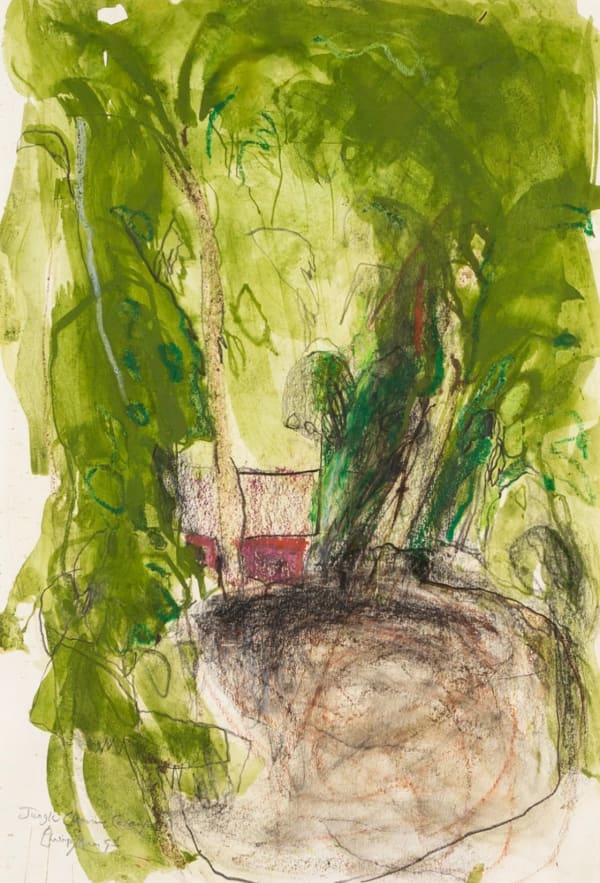Philip Jones 1933-2008
Philip Jones was an English artist who was based in Norfolk for much of his career, though he painted around the world.
Born in 1933, Jones' creative talent was revealed at an early age. As a boy of 11, he was taken by his war-time nanny into the landscape surrounding his family home in Sussex and encouraged to draw and record. It was this girl, Imogen, an art school graduate, who instilled in Jones the ability to see things that others may have missed, and the importance of art in capturing this.
Educated at Malvern College, Jones was taught by the post impressionist painter Harry Fabian-Ware and won both of the school's art prizes. In 1953, he was accepted into the Slade School of Fine Art, where he studied alongside artists such as Victor Willing, Michael Andrews, and William Turnbull. Jones was lucky enough to be privately tutored by Tom Monnington and the Principal, William Coldstream, during his three years at the Slade. The artist was also influenced by the notable visitors to the school, such as Lucien Freud, who subsequently purchased one of Jones' early works.
After first being exhibited at the RBA Galleries in 1954, Jones' work was shown at many galleries central to the London art world, such as the Leicester Galleries (1955), AIA Gallery (1964), London Group (1964), Mansard Gallery, Heals (1967), and in the Contemporary Arts Society exhibition at the Whitechapel Gallery in 1968.
Deciding to move out of London in 1973, after working with many private galleries and the Arts Council, Jones began to dedicate himself to his art full-time, aiming to 'be free from all metropolitan influences'. He chose Norfolk for his home, specifically Clermont Hall, a county famed for its beautiful landscapes and distinct sense of place; the clusters of outbuildings, small chapels, and ploughed fields are the few reminders of humanity's place in its vast green spaces. The work Jones painted in Norfolk, such as Landscape Clermont, has a palette centred around muted browns, soft blues and strong greens, which evoke the rich growth of this spare county.
As well as being inspired by the lands which surrounded his home, Jones drew inspiration from the many countries he visited on his yearly journeys. His main passion outside of art was travel, and the artist would never travel without his paints and brushes in his Gladstone bag. Jones spent most of his winters overseas at coastal destinations, in places such as Namibia, India, Malta, and the Gambia. On these trips, the artist could spend time contemplating and his creativity thrived. When asked in an interview in 2005 why travel was such a drive for him, Jones replied 'for [the] peace and quiet, and drama.'
His deep understanding of, and strong connection with, a sense of place is found in the titling of many of his works - such as Market at Calangute, Three Farm Building Gharb, and Banjul Beach - and with his strong technique, a focus on landscape is felt as well as seen. Many of these paintings set a fragile building, an anchor of habitation, against the natural world, with its winds and elemental forces depicted in his fluid lines and brushstrokes. This focus on the elemental is found in works such as Morning Mist Palm Grove, Rock at Yalla, Deep Water with Rocks, and Breakwater, with its powerful, rocky forms. Once Jones had become adept at portraying a locale, the formal struggle of recreating a sense of place on a support became paramount and he began to focus on an abstract resolution.
After establishing himself and his work, Jones exhibited widely across the UK, including several solo shows and annual acceptances to the Royal Academy's Exhibition for the last 15 years of his life. His work is held in both private and public collections in the UK and Europe, including the National Museum of Wales, the Nuffield Foundation, Plymouth Art Gallery, and the Swedish Merchant Bank, Malmo.
Jenna Burlingham Fine Art represents the Estate of the Philip Jones.








